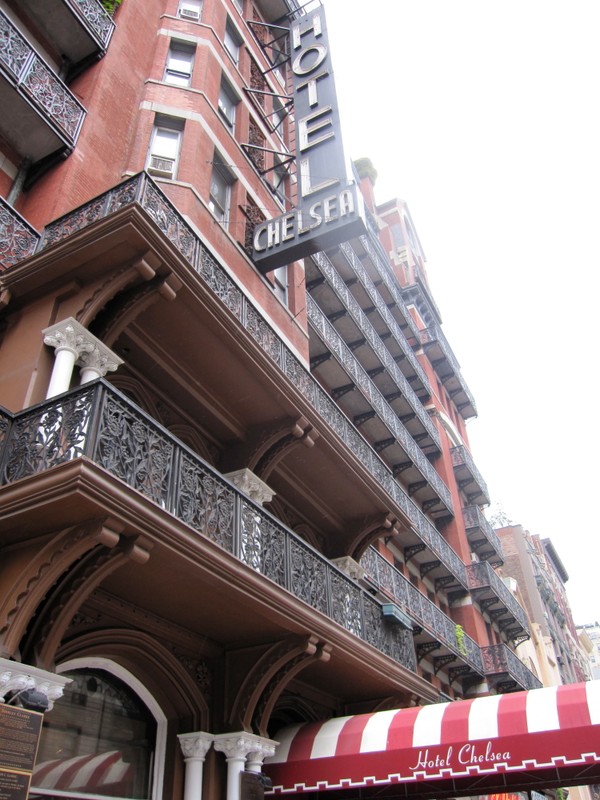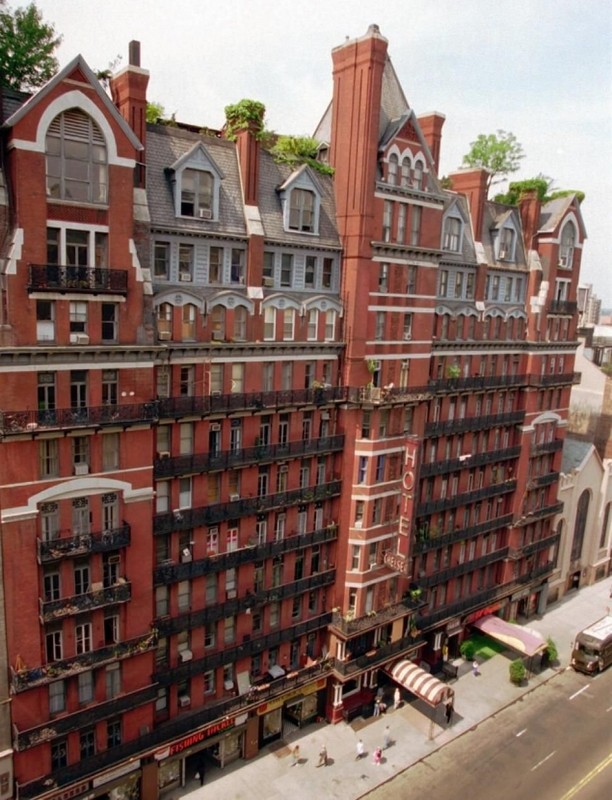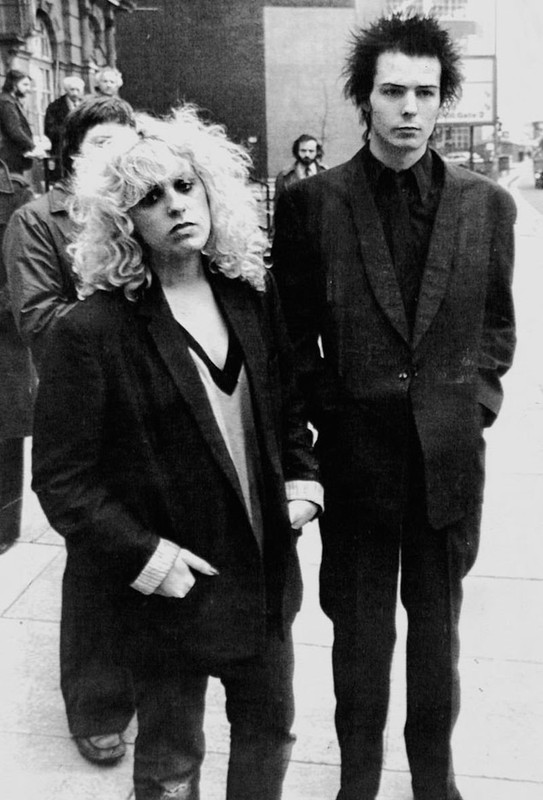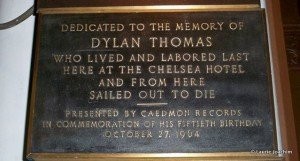Hotel Chelsea
Introduction
Text-to-speech Audio
Images
A view of the Hotel Chelsea.

Chelsea Hotel

The lobby of the Chelsea prior to renovations

Sid Vicious and Nancy Spungeon

A plaque in honor of Dylan Thomas on the building's facade

Backstory and Context
Text-to-speech Audio
Designed by Philip Hubert in 1883, the Hotel Chelsea was built with the vision of being one of the offshoots of the Hubert Home Club, one of the first private apartment cooperatives in the Manhattan area. The Chelsea opened for business in 1885 and was a hit for a brief moment in time, offering patrons apartment living in the theater district of New York. However, as Upper Manhattan began to open with abundant housing, people began to leave the Chelsea, and within a few years, the apartment complex went bankrupt.
The building eventually reopened as a hotel in 1905 but switched hands numerous times throughout the following century. During the Hotel Chelsea’s time serving as a hotel, it played host to numerous iconic patrons who stayed there both short and long-term. The Hotel was popular, especially from the 1960s through the 1970s, and was the subject of songs, films, and other forms of popular media that were produced by the patrons of the Hotel.
A list of the hotel's famous residents and guests reads like a who's who of the twentieth century. Mark Twain once called the Chelsea home, a fact which could make the building a landmark even if no other celebrities or literary titans lived there. Tennessee Williams also lived there, and apparently occupied the room that Jon Bon Jovi would have many decades later. Jack Kerouac wrote On the Road there and Dylan Thomas had his last (and fatal) drinking binge in the hotel. Arthur C. Clarke wrote 2001: A Space Odyssey during a stay at the place that he referred to as his spiritual home. Arthur Miller stayed at the Chelsea while dealing with the demise of his marriage to Marilyn Monroe. Thomas Wolfe spent most of the last years of his life living at the property. Eugene O'Neill, Brendan Behan, Allen Ginsberg, and Simone de Beauvoir were also residents.
And then there are the musicians. Leonard Cohen and Janis Joplin had a one-night stand that led to Cohen's "Chelsea Hotel No.2." Bob Dylan lived there while carrying on an affair with fellow resident Edie Sedgwick. He also wrote "Sad-Eyed Lady of the Lowlands" at the Chelsea. Dee Dee Ramone checked into the Chelsea for a self-imposed detox. Jimi Hendrix, Madonna, and Iggy Pop also called the hotel home.
With a long list of colorful former residents and guests, the Chelsea has one of the city's most storied pasts, as well as its share of tragedies. The Chelsea's most notorious incident occurred in 1978 in Room 100, where Nancy Spungeon, girlfriend of the Sex Pistols's Sid Vicious, was founded fatally stabbed. High on heroin, Vicious had no memory of the attack, and died of a heroin overdose while awaiting trial for her murder. The "Vicious Room," as it came to be known, was eventually closed and knocked into adjoining rooms to end its notorious reputation.
More than a few acclaimed visual artists have made a home at the storied property. Frida Kahlo, Jackson Pollack, and Andy Warhol lived there. During the famous tenure of Stanley Bard, the Chelsea's owner-manager from the 1960s to 2007, artwork was often accepted in lieu of cash for rent, and until renovations began, many of those works adorned the hotel's lobby.
In 2011, the Hotel Chelsea changed hands, which signaled a change in the Hotel as a whole. The Hotel Chelsea stopped taking reservations in August of 2011, and renovations to the building began soon after. Permanent patrons feared that they would be ousted from the building, but no such thing happened. Since then, the Hotel Chelsea has changed management twice, and as of this writing, the renovations are ongoing.
The Hotel Chelsea is listed on the National Register of Historic Places.
Sources
Marshall, Colin. "New York's Famous Chelsea Hotel and Its Creative Residents Revisited in a 1981 Documentary." Open Culture. 1/31/14. Accessed Web, 5/27/17. http://www.openculture.com/2014/01/new-yorks-famous-chelsea-hotel-and-its-creative-residents-revisited-in-a-1981-documentary.html.
Allen, Matt. The Story of New York's Most Infamous Hotel. Sabotage Times. October 23, 2018. Accessed April 20, 2019. https://sabotagetimes.com/travel/tales-of-excess-from-the-chelsea-hotel.
